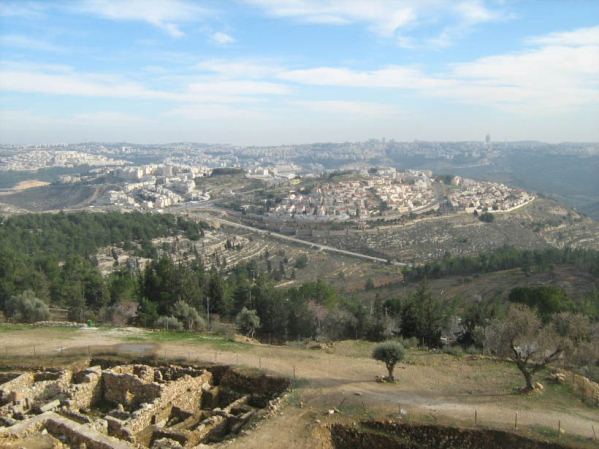One house in the hills of Ramot in Northwest Jerusalem stands out from others. On its lawn, the Indian tricolor takes its place alongside the blue and white flag of Israel. Inside the house lives a portly, friendly, Marathi Jew named Noah Massil and his wife Sybia.
Now 65, the one time Mumbai electrician, and long time president of the Central Organization of Indian Jews, immigrated to Israel in 1970. Most of the Maharashtra-rooted Bene Israel community, to which Massil belongs, came here on the heels of Israel’s victorious Six Day War in 1967. They are by far the largest of the three Indian émigré groups that together number around 75,000. Jews from Cochin and the Baghdadis from Calcutta mainly, are the other two. There are perhaps 30,000 Bene Israel, but estimates vary. Some put the figure much higher.
New jobs were opening up with the expanded economy, and for the religious, it was a chance to fulfill the exilic longing of Passover: Next year in Jerusalem.
Massil’s organization has 29 branches throughout Israel. It prints a booklet in Marathi on the rights of new immigrants. It accompanies elderly immigrants to Jewish Agency offices, so they can get the help they need. It has set up an education fund for Indian children in Israel, as private schools in Israel are quite expensive. It also organizes celebrations for India’s Independence Day, and conducts festivals of Indian song and dance performed by Indian-2- Israeli children.”
In India,” said Massil with a chuckle, “we were once known as the ‘Saturday olive pressers’ because we didn’t work on Saturday. The Bene Israel arrived in Maharashtra 2,300 years ago from this country after a shipwreck that left only 14 people alive. The story passed down to us was that seven men and seven women survived, and they paid Hindus for the land to bury their dead and start their lives over again. The first village our people settled in was Nawgaon. All of us take our surnames from the villages we settled in. My last name was originally Mhashilkar.”
A people that arose from the sea in India and arrived in Israel without a written history is odd for a Jewish community. The part of Massil that is Indian regards with unthreatened laughter the cultural bias of European Jews who maintain that what is written is what is real. “The Israeli rabbinate gave us a problem when we arrived. They said, ‘You didn’t have rabbis, so how did people get Jewish divorces?’ The Bene Israel may not have had rabbis, but we also didn’t have divorce. In India, poor people don’t get divorced. In the rare case of someone wanting a divorce, they went before a group of elders in the synagogue to resolve the matter.”
Acceptance took a while. Eventually, the rabbinate backed off, and the Bene Israel earned the reputation as a hard working people. They began as textile workers in Dimona. Many are now dock-workers in Ashdod, with the younger generation increasingly surrendering to the allure of high-tech.
Massil estimates that as many as 80% of the Bene Israel still marry within the community, a high figure for Israel, where the intermingling of Jews from all over world is facilitated by the public school system, the learning of Hebrew and military service.
“As per the Indian-Jewish tradition, and the Indian tradition in general, parents used to arrange their children’s marriages. In Israel, they prefer that their children marry Indian-Jewish children.” But Massil admitted with a good-natured shrug that all his four children have married out. “I have three sons and a daughter. One of my sons is married to a girl of Syrian-Turkish parents, another to a Russian, the third to a Romanian. My one daughter married to a Moroccan boy. My associates tease me. They say, ‘You can’t be president anymore.’”
In a country where immigrants often cut ties definitively to their native lands, Massil and his wife, like many in his community, return every year to visit old friends, places from their youth. In one of his poems for his Marathi quarterly magazine, Mai Boli (My Mother Tongue), Massil writes: “I want to be happy,/but my heart is not happy./ Why?/ I remember India./ Here, nothing is missing,/but always I remember you, India.”
“We publish seasonal stories, first person stories, poems about India and about Israel,” he says.
Massil himself is the author of two books of Marathi poetry, Kawya Nad (1970) and Mazi Mai Marathi (2002). Though its subscriber base, at just over 500, is modest, it was praised by Madhav Gadkari, the late editor of the Marathi daily, Loksatta, as “a bridge between Israel and all Marathi speakers,” deserving “to be saluted for their contribution in strengthening bonds between India, Israel and abroad.”
In 1996, a delegation from the International Marathi Speakers Conference arrived in Jerusalem, along with the Chief Minister of Maharashtra, to honor Massil for his efforts in keeping the Marathi language alive among Indians abroad. Massil still glows over the certificate that hangs on his wall over the piano.
Of his four children, all of whom heard Marathi spoken at home, only his daughter speaks the language, albeit poorly, and cannot read or write it. “My sons understand Marathi only partially. They also cannot read or write it.”
In Israel, that is understandable. Hebrew is more than just the national language. It was resurrected from Biblical times by Jewish settlers in the early twentieth century. Synonymous with Jewish liberation, it has evolved into a quasi-mystical entity that is very hard to compete with. There are no Marathi classes in Israel, even in places like Ashdod, where the Bene Israel community is strong. The young are too busy assimilating. The job of preserving the Marathi language and culture is left to the old.
But Massil isn’t complaining.
